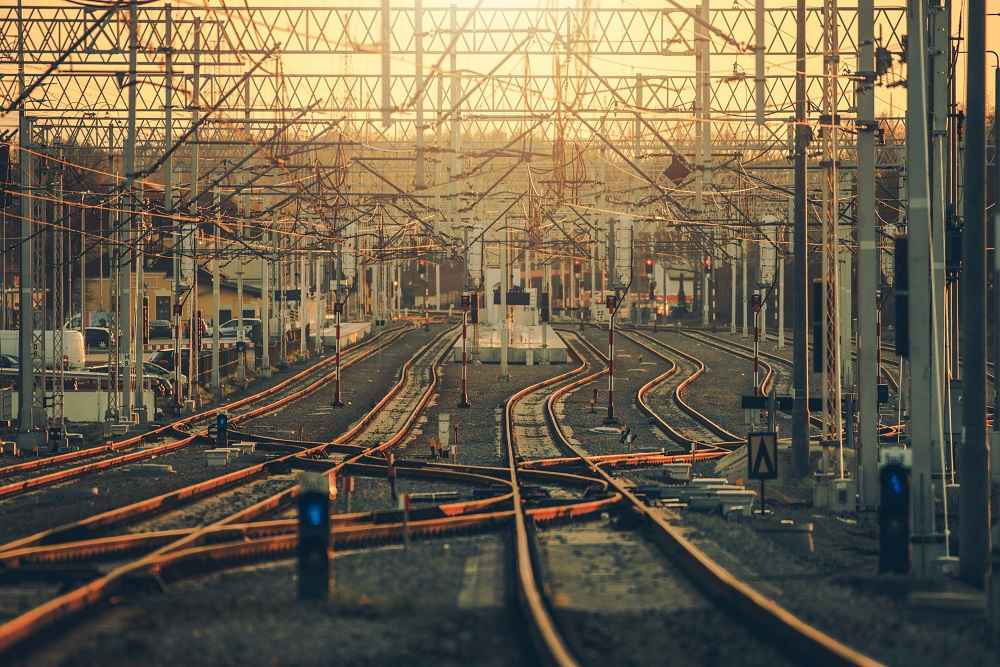Rail infrastructure serves as the foundation for efficient and sustainable transportation networks, facilitating the movement of passengers and freight across vast distances. From urban transit systems to long-distance freight corridors, rail infrastructure plays a crucial role in supporting economic growth, reducing carbon emissions, and enhancing connectivity. This article provides an overview of rail infrastructure, its components, functions, and significance in the modern world.
Components of Rail Infrastructure
Rail infrastructure consists of several key components that work together to support railway operations:
1. Tracks
Tracks form the physical foundation of rail infrastructure, providing a stable surface for trains to travel on. They typically consist of two parallel steel rails mounted on wooden or concrete sleepers, supported by ballast or concrete slabs. Tracks are laid out in interconnected networks, allowing trains to travel between destinations efficiently.
2. Stations
Railway stations serve as hubs where passengers board and disembark trains. They are equipped with platforms, ticketing facilities, waiting areas, and other amenities to accommodate travelers. Stations vary in size and complexity, ranging from small rural platforms to large urban terminals serving thousands of passengers daily.
3. Signals and Signaling Systems
Signals and signaling systems ensure the safe and efficient operation of trains on railway tracks. They provide essential information to train operators, indicating when it is safe to proceed, stop, or change tracks. Advanced signaling technologies, such as block signaling and automatic train control, help prevent accidents and optimize train movements.
4. Bridges and Tunnels
Bridges and tunnels are critical elements of rail infrastructure, allowing trains to traverse natural obstacles such as rivers, valleys, and mountains. They are engineered to withstand heavy loads and harsh environmental conditions while maintaining the integrity and stability of the railway network.
Functions of Rail Infrastructure
Rail infrastructure serves several essential functions in transportation systems:
1. Facilitating Mobility
Rail infrastructure provides a reliable and efficient mode of transportation for passengers and freight. By connecting cities, regions, and countries, rail networks facilitate mobility, enabling people to travel for work, leisure, and commerce while reducing reliance on automobiles and airplanes.
2. Supporting Economic Development
Rail infrastructure plays a vital role in supporting economic development by facilitating the movement of goods and services. Freight railways transport raw materials, finished products, and commodities, supporting industries such as manufacturing, agriculture, and logistics. Passenger railways stimulate tourism, business travel, and commuter traffic, contributing to local and regional economies.
3. Promoting Sustainability
Rail infrastructure offers environmental benefits by reducing greenhouse gas emissions, congestion, and reliance on fossil fuels. Compared to road and air transportation, trains produce fewer emissions per passenger or ton-mile traveled, making rail travel a more sustainable option for long-distance journeys.
4. Enhancing Safety
Rail infrastructure is designed with safety in mind, incorporating features such as grade crossings, fencing, and warning signals to minimize the risk of accidents and collisions. Advanced technologies, such as positive train control and onboard safety systems, further enhance the safety of rail operations, protecting passengers, employees, and communities along railway corridors.
Significance of Rail Infrastructure
Rail infrastructure plays a significant role in shaping the modern world:
1. Global Connectivity
Rail infrastructure connects cities, regions, and countries, fostering trade, tourism, and cultural exchange on a global scale. Transcontinental railways and international rail links enable goods to be transported across continents, linking markets and suppliers worldwide.
2. Urban Mobility
In urban areas, rail infrastructure provides an essential alternative to congested roads and highways. Urban transit systems, including subways, light rails, and commuter trains, offer fast, reliable, and environmentally friendly transportation options for residents and visitors alike.
3. Transportation Resilience
Rail infrastructure enhances transportation resilience by providing an alternative mode of travel during emergencies and natural disasters. Railways can transport relief supplies, evacuate residents, and restore connectivity in areas affected by hurricanes, earthquakes, or other crises.
4. Technological Innovation
Rail infrastructure drives technological innovation in areas such as materials science, engineering, and transportation logistics. Advances in high-speed rail, maglev technology, and automated train control systems continue to push the boundaries of what is possible in rail transportation.
In conclusion, rail infrastructure is a vital component of modern transportation systems, supporting economic development, mobility, and sustainability. By investing in the expansion, maintenance, and modernization of rail networks, societies can reap the benefits of efficient, safe, and environmentally friendly transportation for generations to come.


